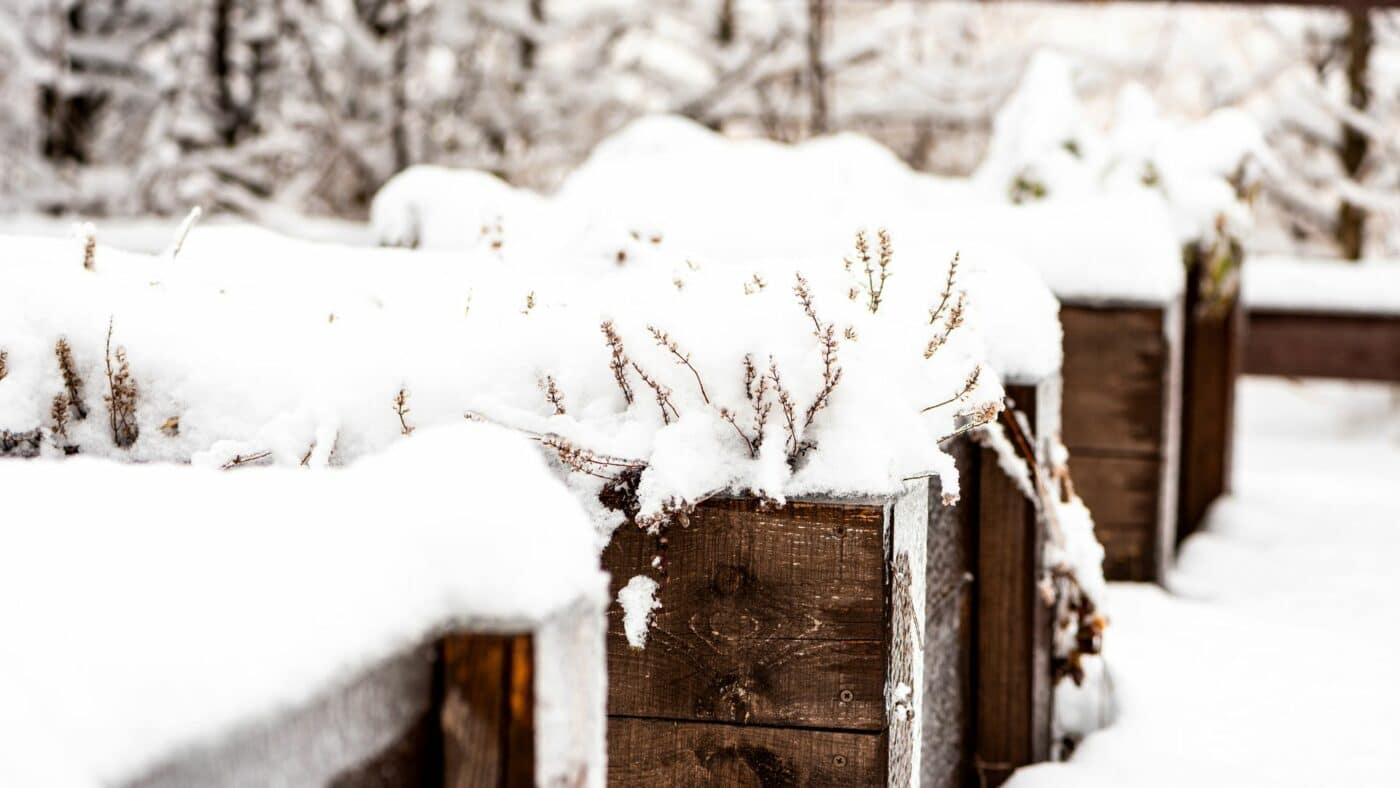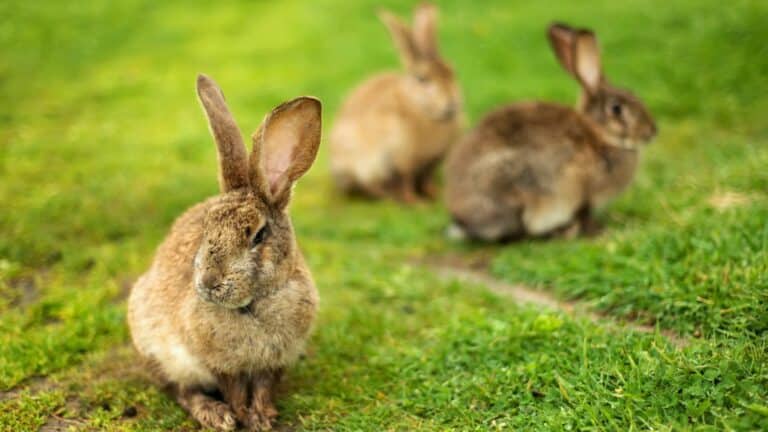
50% Off Our Old Packaging – Same Fresh Hay, Just a New Look Coming Soon!
For a limited time, all hay products are 50% off. Fresh, nutritious, and perfect for rabbits, guinea pigs, and more!

For a limited time, all hay products are 50% off. Fresh, nutritious, and perfect for rabbits, guinea pigs, and more!
Stay in the loop on NEW products and deals!


Wondering how straw mulch can help your garden this winter? In this article, we outline eleven ways (compost, nutrients, ect.) that straw mulch can potentially protect and promote garden health through the winter.
Enough with the introductions! Let’s dig into your answers!
Yes, straw offers a safe and effective way to protect your soil from the negative effects of winter. When cold weather arrives, it tends to bring the unwanted gifts of moisture loss, compaction, nutrient leaching, and more. Keep reading the following point to understand why it’s imperative to cover your garden with straw during this winter season.

Maybe you love the cold, or perhaps you hibernate indoors with your heater blasting and a YouTube fireplace blazing. But regardless of your personal seasonal preferences, you need to consider the health of the soil. By placing straw on your garden, you help to eliminate some of the negative effects of bare soil during winter.
Of course, on the other hand, forgetting to add straw (or an alternative covering) on your winter garden can lead to some unwanted problems. These include:


Iowa State University defines soil erosion as the deteriorating of soil due to water or wind driving soil particles away. Soil that is left uncovered is susceptible to erosion, especially in areas with heavy rainfall or snow. Without a proper cover, water can wash away the topsoil which is loaded with needed nutrients.
When water or melted snow drives topsoil away, essential nutrients and minerals are transported further down the soil. If the nutrients are there, then why does this matter? Well, in severe cases of nutrient leaching, your spring garden will suffer. For example, the roots of your treasured tomato and corn plants may struggle to tap into their source of needed nutrients. Don’t let your plants get malnourished; cover them with a good source of straw.
In winter, it goes without saying that your soil is more susceptible to moisture through snow, ice, and the inevitable melting of both. But soil that is continually wet can result in soil compaction (soil particles being pressed together). With compacted soil, your roots will have trouble growing into full, mature plants. We know you don’t want your green bean plants to stay little babies! Protect their future growth through a layer of straw this winter!

If you get lazy and decide against a straw cover for your garden’s winter experience, you may encounter some pesky weed growth. We’re guessing that doesn’t thrill you. Choose straw. Your “Spring Self” will thank you.
Are you living in a dry location with limited exposure to snow, ice, or rain? We’ve got a tip for you. If you put straw on a garden for the winter months, you will help protect the soil against overexposure to the sun. And as a result, this will help prevent extra cracks in the soil and hold the moisture content.
Let’s face it. Winter is moody (and sometimes we are, too), leaving us baffled by some intense fluctuations in temperature. Now when soil is exposed to bizarre temperature changes, the top portion of your soil is affected. A thaw and freeze cycle may occur. In practical terms, this means that your plants with small root systems may slowly pull out of the ground.
But never fear! (Have you guessed the solution, yet?) Adding a winter layer of straw on your garden provides insulation to your soil. With this in place, the inevitable fluctuation in temperatures will not have as profound of an impact on your top soil or plants.
| Forgetting a Winter Garden Cover Leads To: | What This Means: |
| Soil Erosion | Eliminates needed nutrients in soil |
| Nutrient Leaching | Hard for roots to access their needed nutrients |
| Compaction | Difficult for roots to grow and access nutrients |
| Weed Growth | Extra work for you in the spring |
| Loss of Moisture | Soil may crack, making it difficult for plants to thrive |
| Temperature Shifts in soil | Plants with small root systems can be uprooted |
Let’s summarize this section briefly. When you use straw mulch for your garden in the winter, you eliminate the disadvantages of soil erosion, nutrient leaching, and more. And ultimately, by doing so, you are filling your soil with many pros. Ready to learn about a few more?

Okay, what’s the hype of garden straw mulch for a garden? And more importantly, what are the advantages of straw mulch for a garden in the winter? A few of the advantages of straw mulch include affordability, easy composting, insulation, accessibility, and fresh organic nutrients to soil.
When you choose to cover your garden with straw, you will be pleased to know that you’ll be pinching some pennies. Now, you’ll have extra cash to invest in your hobbies: plants, plants, and more plants.
You can trust that straw will compost fairly easily. And how is this a benefit, you may ask? Well, you can rest assured that eventually the straw will compost into your soil.

To build off the previous point, when straw decomposes, it releases organic nutrients that will then be added to your soil. This improves the overall quality of your soil, which in turn affects the quality of your plants.
During the cold winter months, it’s important that your soil is insulated because of the rapidly changing temperatures. It may dip well below freezing during the night and then during the day, the direct sunlight could produce temperatures above the freezing point. When this occurs, frost heaving is the end result, leading plants with shallow roots out of the ground.
Yet another reason to choose straw as a covering for your garden this winter, is its extreme accessibility. As an avid gardener, you won’t have to look far for quality straw. In fact, at Blue Mountain Hay, we ship directly to you, freeing up your time to do what you are most passionate about: caring for your baby plants. 🙂

We wouldn’t be a reputable source if we didn’t dig into the disadvantages of straw mulch for a winter garden. Consider the following:
If you have animals loose on your property, they may forage through the straw. Of course, you don’t want your precious soil to lose its source of insulation, so you may have to consider either blocking your animals from the garden area, or choosing another winter cover for your garden.
If you live in dry regions, such as South Dakota, you may have to consider a different covering for your garden this winter as straw tends to pose a fire risk.

After the first frost of the season, it’s a good time to start spreading straw over your garden. The exact timing can depend on where you are located; it may be late fall or early winter. But there are two main things to consider:
Make sure that you add a layer of straw that is 3-8 inches thick, depending on how cold your region becomes.

Use these three simple steps to get a wonderful winter covering for your garden:
View our video for more step-by-step instruction!
Maybe you are sold on adding straw to your garden, but what about the strong winds? Won’t they whisk away your garden protection and your hard work?
Here are a few solutions to this problem:

It’s important to add a thick layer of straw to your plants during the winter. But which plants, in particular?
Grab a wheelbarrow of straw and start covering these plants:


While we can’t speak for other providers, at Blue Mountain Hay, we offer straw that is harvested without chemicals or additives. Grown in the high altitudes of the Pacific Northwest, our garden straw is completely organic. As you scatter a fresh, thick layer of straw insulation over your garden this winter season, you can have peace of mind. No harmful byproducts for your soil. Just protection from the elements and bipolar temperatures.
If you want more information to read, check out our articles on straw bedding for cats and straw bedding for chickens.
Wishing you a restful, warm winter season for you and your garden!

Got questions about which hay options are best for your pet rabbit? You’ve come to the right spot!

Don’t allow yourself to be ignorant about RHDV2. Read this article for more information!

Do you ever wonder how timothy hay could benefit your guinea pig? You’re at the right place. This article goes into great depth, providing detailed explanations into how timothy hay will enhance your guinea pig’s health.